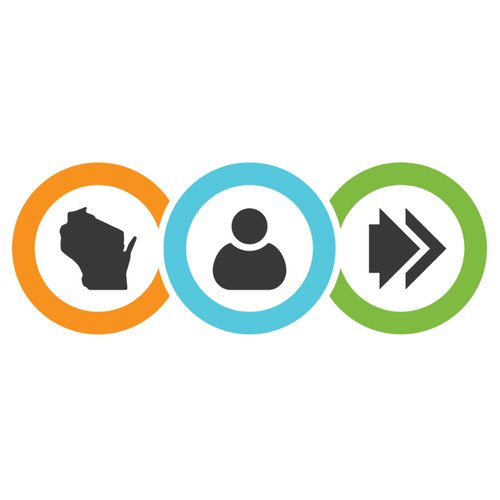State’s First Dental Assistant Registered Apprenticeship Program Launches
Program is latest earn-while-you-learn solution aimed at workforce shortages
MADISON – Wisconsin Department of Workforce Development (DWD) launched the state’s first Dental Assistant Registered Apprenticeship program on Friday, July 25, at Martin Dental in Altoona, Wis. The program is the latest DWD earn-while-you-learn solution to address workforce shortages, especially those in healthcare and other critical sectors.
“The new dental assistant apprenticeship program is an example of another smart investment by the Evers Administration to address our worker quantity challenge and to train the next generation of our workforce,” said DWD Secretary Amy Pechacek. “Closing workforce gaps in the healthcare workforce is vital to both the well-being of our communities and the sustainability of our healthcare system. DWD remains committed to collaborating with partners to build and sustain a strong healthcare workforce for the future.”
“Because oral health is integral to overall health, we were pleased to provide grant funds to an employer to pilot this program for dental assistants,” said DHS Secretary Kirsten Johnson. “Innovative programs like the Registered Apprenticeship are needed to increase awareness of and interest in all oral health professions. Supporting and strengthening the dental workforce is a key component of increasing access to oral health care in Wisconsin as well.”
“The quality of the care a dentist provides is strongly linked to a highly trained dental assistant and the patient experience is also enhanced,” said Tony Martin, Martin Dental owner and dentist. “This apprenticeship program is a step that creates a pathway for dental assistants to gain the knowledge and skills necessary to be successful in today’s advanced dental practices.”
Dental Assistant Registered Apprenticeship
Through Wisconsin’s proven apprenticeship model, this program provides a talent pipeline to help employers fill open positions. The Dental Assistant Registered Apprenticeship is a 15-month program comprised of 592 hours of paid related instruction and 2,008 hours of on-the-job training for a total 2,600 hours of educational preparation. The minimum pay during instruction is $20 to $22 per hour.
“This new program ensures participants are work-ready and helps remove the cost barrier that could discourage those wanting to pursue a career in the dental field,” said DWD’s Bureau of Apprenticeship Standards Director David Polk. “It also could be an opportunity for employers to recruit high school students who participated in our Youth Apprenticeship Dental Assistant pathway who want to further their training through this registered apprenticeship program.”
The experience and training for dental assistant apprenticeship includes:
- Assisting practitioners to perform dental procedures, such as preparing patients before procedures
- Cleaning dental equipment
- Preparing dental instruments or equipment for use
- Maintaining dental records
- Explaining technical dental information to patients
- Interviewing patients to gather medical information
- Recording vital statistics or other health information
- Administering basic health care or dental treatments
- Making patient-assistive devices or device models
Dental assistant job outlook
The dental assistant’s role encompasses more than 200 clinical, administrative, and technical functions within a dental practice that contribute directly to safe and efficient dental care, according to the U.S. Bureau of Labor Statistics (USBLS). Employment is projected to grow 8 percent from 2023 to 2033, faster than the average for all occupations. Median pay in Wisconsin for dental assistants is $48,000 annually.
Apprenticeship growth in Wisconsin
The state’s Registered Apprenticeship program reached a record 17,089 enrolled apprentices in 2025, an all-time record and the third consecutive year of record participation in the program’s 112-year history. The program combines structured, on-the-job training with classroom instruction and allows apprentices to earn money while they learn, rewarding employers with a skilled workforce and providing participants with family-supporting careers.
Wisconsin has more than 200 apprenticeship occupations with over 2,600 employers. While traditional construction trades apprenticeships display continued strength, emerging employment sectors and occupations, including healthcare, are building the depth of offerings and growing apprenticeship opportunities.
Healthcare registered apprenticeship programs in Wisconsin have grown rapidly as the need for skilled workers across the sector has risen. Since the launch of Wisconsin’s first healthcare registered apprenticeship pathway in 2018, DWD has introduced registered apprenticeship pathways including: registered nursing, respiratory therapist, surgical technologist, ophthalmic assistant, caregiver, interventional cardiovascular technologist, medical assistant, pharmacy technician, and sterilization technician. The registered nurse, respiratory therapist, and surgical technologist apprenticeships were all first of their kind, degree-granting programs.
The demand for Youth Apprenticeship has also skyrocketed, reaching a record-high enrollment 11,344 high school juniors and seniors during the 2024-2025 school year, a 14 percent increase from the prior year. More than 99 percent of Wisconsin public school districts with a high school had students enrolled in Youth Apprenticeship as the program partnered with a record 7,447 employers.
Additionally, the health science youth apprenticeship pathways had the highest participation last school year with 2,089 enrollees, followed by manufacturing, marketing, architecture and construction, and agriculture, food, and natural resources. Wisconsin has had a Dental Assistant Youth Apprenticeship pathway since 2006. In the 2024-2025 school year, 67 dental assistant youth apprentices earned and learned at 64 employers across the state.
Participation in Certified –Pre-Apprenticeship programs, which prepare adult participants for registered apprenticeships and careers of the future, is also gaining increasing interest with 37 programs and 23 participating training providers in 2024.
Bolstering the healthcare workforce
Making up 15.3 percent of the state’s jobs, the healthcare sector is an integral component of Wisconsin’s workforce. As Wisconsin Gov. Tony Evers has prioritized efforts to support and stabilize some of Wisconsin’s most challenged industries, a number of programs are designed to combat healthcare workforce challenges, including:
- The $128 million Workforce Innovation Grant (WIG) program, administered through a partnership between DWD and the Wisconsin Economic Development Corporation, included $14.6 million toward the healthcare workforce solutions across the state. The WIG program encouraged regions and communities to develop long-term solutions to the workforce challenges the state faced after the COVID pandemic, and many of those programs are coming to fruition today and spurring ongoing investment. The program is part of Gov. Evers’ Workforce Solutions Initiative (WSI) an unprecedented $158 million investment in the workforce.
- The $20 million Worker Advancement Initiative, another WSI program, offers subsidized employment and skills training opportunities with local employers. Administered by DWD and managed by Wisconsin’s 11 workforce development boards, several boards have used funds to support the healthcare workforce, such as training for Certified Nursing Assistants (CNAs), nursing aides, and an associate degree-level nursing program.
- Since 2013, Wisconsin Fast Forward training grants have helped employers, including healthcare organizations, train and retain workers and address the skills gap. These grants have provided more than $51 million to reimburse the cost of training and benefited more than 30,000 workers to gain a higher level of employment or increased wages.
- In 2024, Governor Evers signed the executive order to create the Governor’s Task Force on the Healthcare Workforce, resulting in an Advisory Action Plan and to address industry issues including education and training, recruitment, and retention of healthcare workers.
NOTE: This press release was submitted to Urban Milwaukee and was not written by an Urban Milwaukee writer. While it is believed to be reliable, Urban Milwaukee does not guarantee its accuracy or completeness.
Mentioned in This Press Release
Recent Press Releases by Wisconsin Department of Workforce Development
DWD Announces Two-Factor Authentication Now Required to Access the Unemployment Insurance Claimant Portal
Nov 6th, 2025 by Wisconsin Department of Workforce DevelopmentTwo-factor authentication helps protect claimant accounts from being taken over by someone who has gained access to a claimant’s username and password.





















